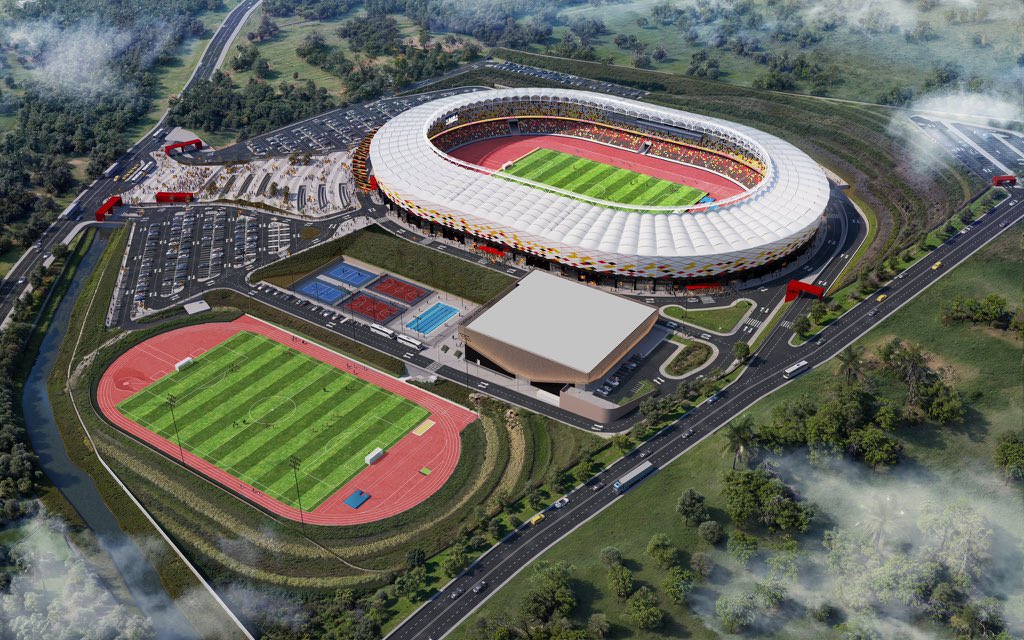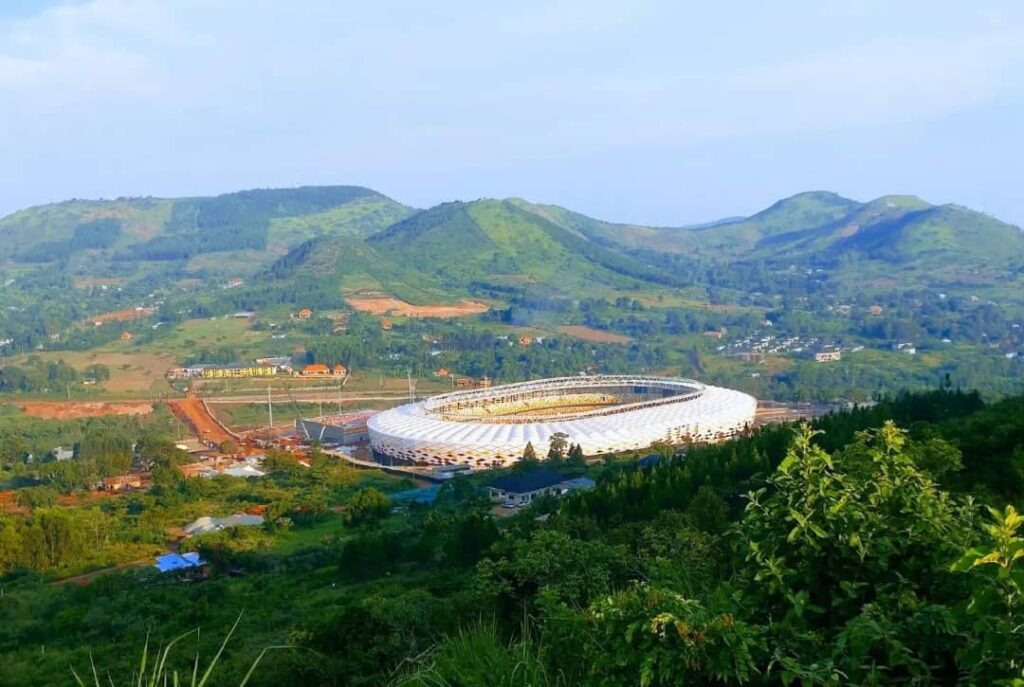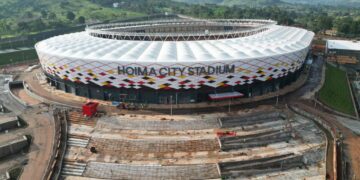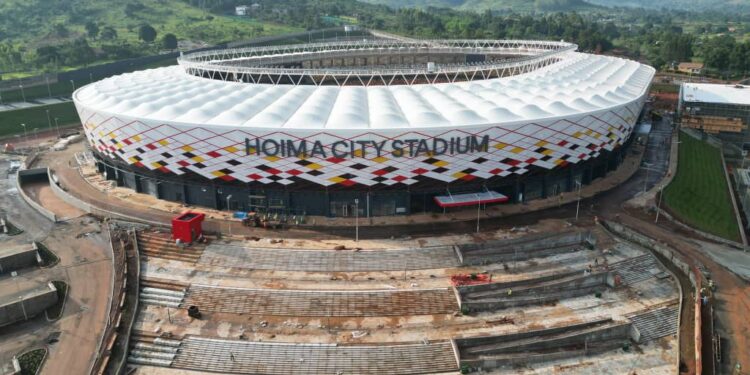Hoima City – Construction of the state-of-the-art Hoima City Stadium, a flagship project in Uganda’s oil-rich Albertine region, is advancing rapidly and is now more than 80% complete.
The 20,000-seater stadium is fully funded by Uganda’s Petroleum Fund, marking a major milestone in the country’s commitment to utilising oil revenues for strategic infrastructure projects.

The stadium will serve as one of the key venues for the 2027 Africa Cup of Nations (AFCON), which Uganda will co-host with Kenya and Tanzania. Once complete, the facility will feature not just the main stadium with a modern canopy but also a 2,000-seat indoor arena for sports such as basketball and netball, a semi-Olympic-sized swimming pool, a training ground, and multiple outdoor courts.
Speaking to SoftPower News, Ernest Rubondo, Executive Director of the Petroleum Authority of Uganda (PAU), said the project underscores the government’s vision of ensuring that oil revenues begin benefiting Ugandans even before production commences.
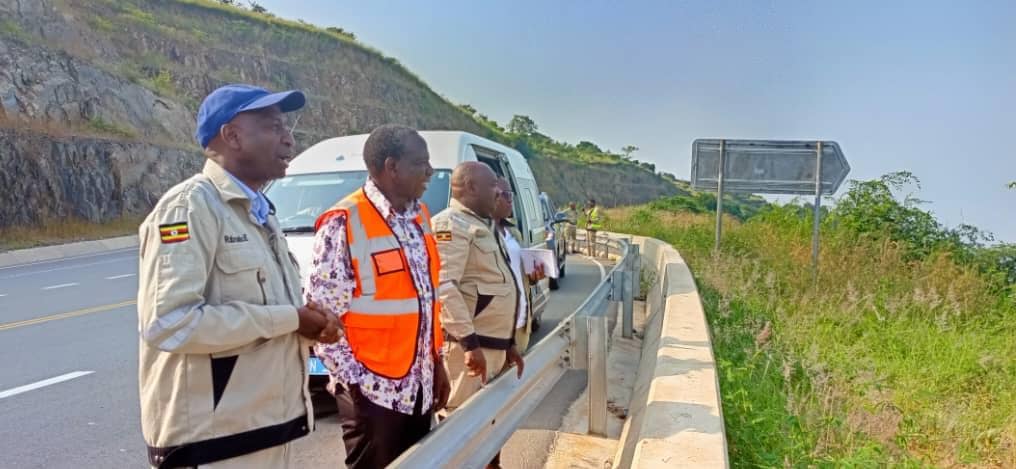
“There is no reason to think that the benefits of the resource will start only when oil production begins,” Rubondo said. “The interesting times are already here. You can feel and see them through projects like this stadium.”
President Yoweri Kaguta Museveni also reaffirmed the government’s commitment to the Hoima project, noting that the stadium location was chosen because of ongoing infrastructure developments in the region, including an airport to support AFCON logistics and tourism.

The Ministry of Works and Transport confirmed that the stadium is being built to international standards to position Hoima as a major sports and economic hub. Officials expect the facility to significantly boost sports tourism, hospitality growth, and local employment ahead of both AFCON 2027 and the African Nations Championship (CHAN) in 2025.
With funding from the Petroleum Fund and oversight from the Bank of Uganda, the Hoima City Stadium stands as a symbol of Uganda’s strategy to turn oil wealth into tangible national assets, transforming Hoima into a modern oil city with world-class infrastructure.
